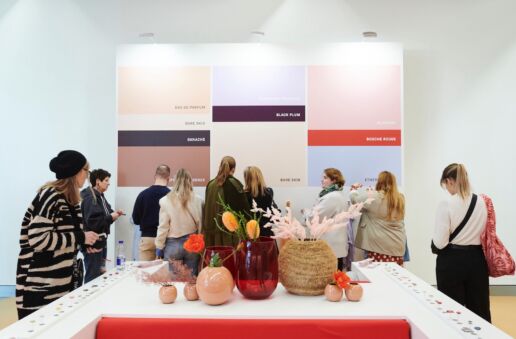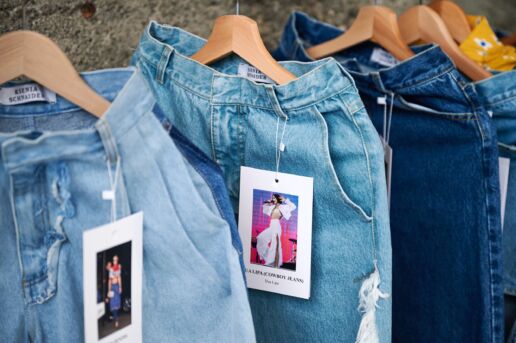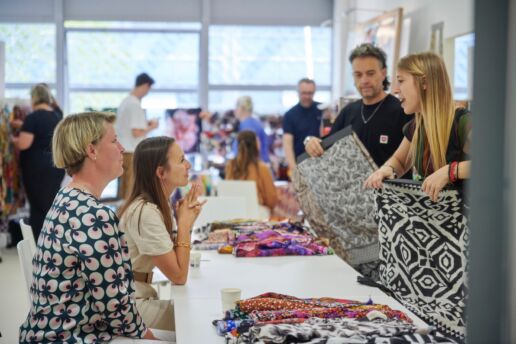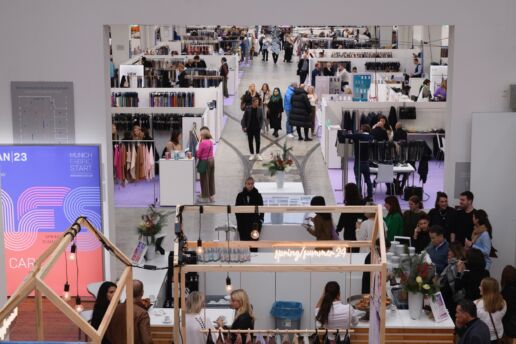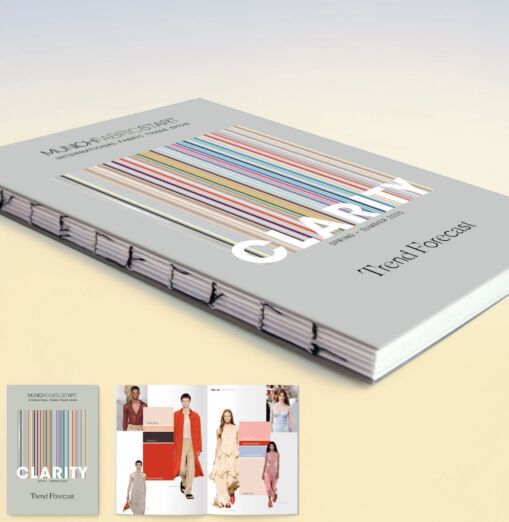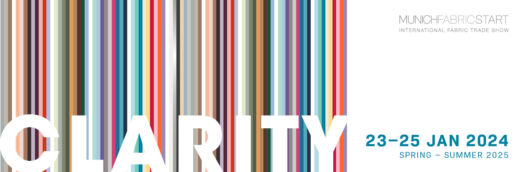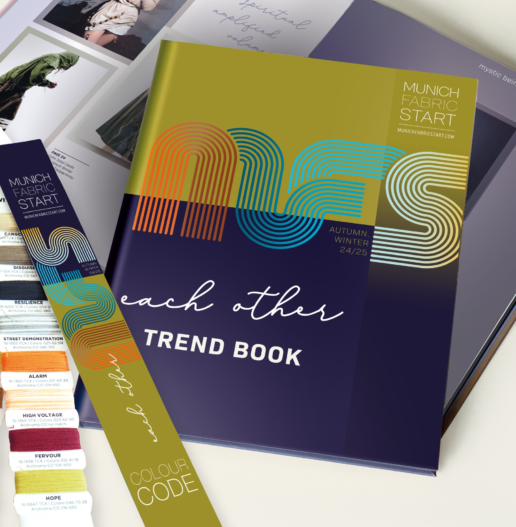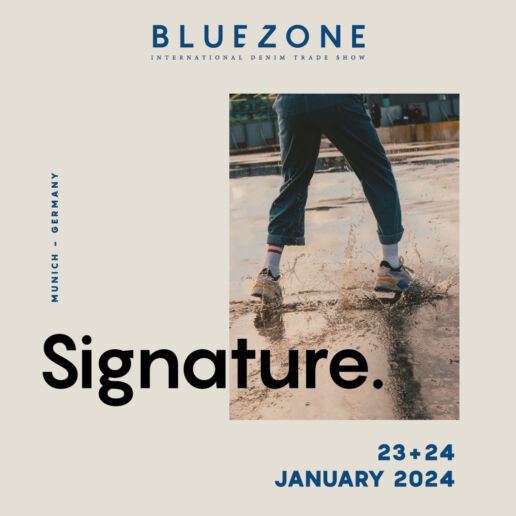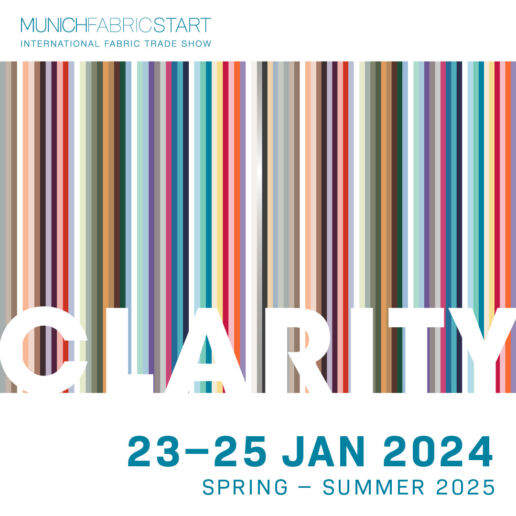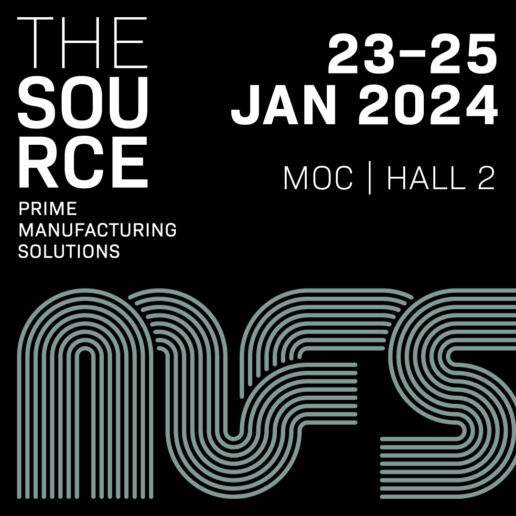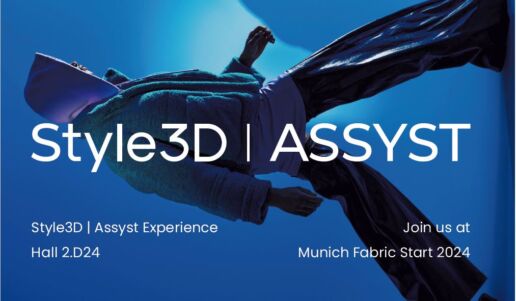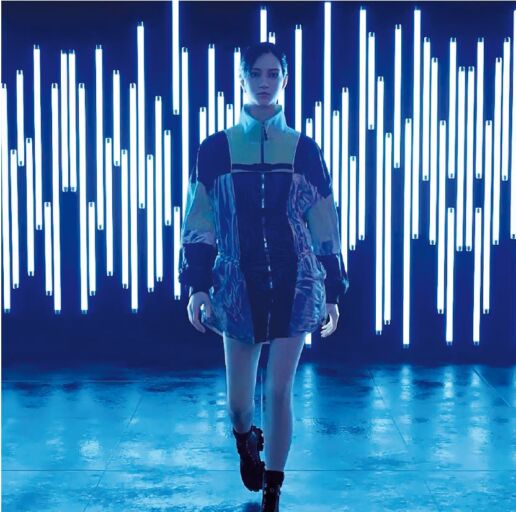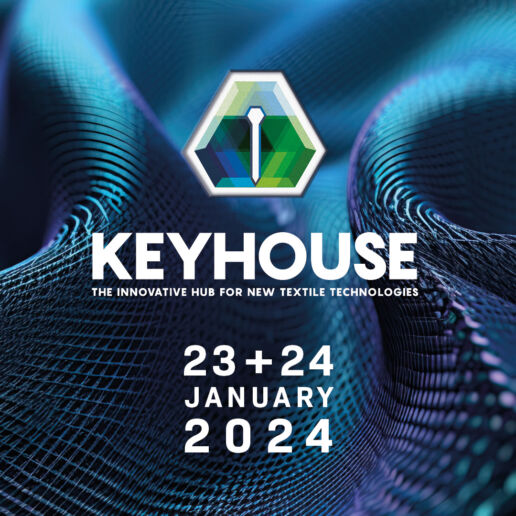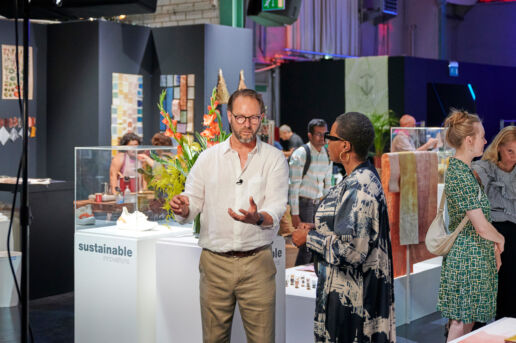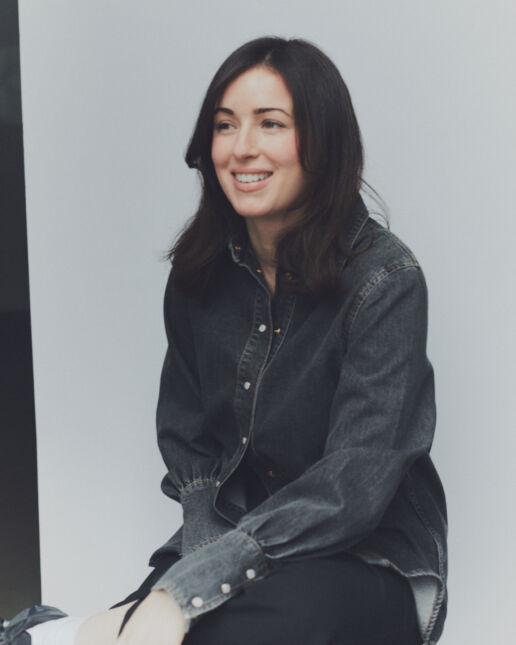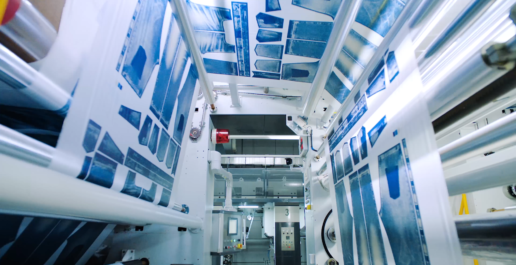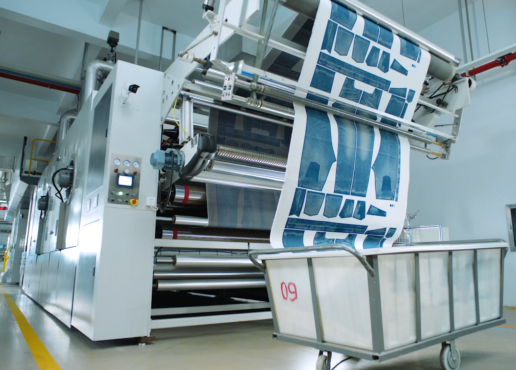Spring.Summer25
MUNICH FABRIC START Januar 2024 - Closing Report
The Spring.Summer 2025 edition of MUNICH FABRIC START came to an end yesterday afternoon. Under the motto “CLARITY”, designers, buyers, product managers and decisionmakers were able to view the latest products and services for the new season from around 1,000 international suppliers, spread over the eight areas ADDITIONALS, FABRICS, ReSOURCE, BLUEZONE, DESIGN STUDIOS, KEYHOUSE, SUSTAINABLE INNOVATIONS and THE SOURCE.
The essence of the meeting of the European fashion industry: we are experiencing a return to our roots to meet the growing need for orientation – supported by a variety of exciting sustainable and AI-supported solutions that can pave the way to the future for the industry.
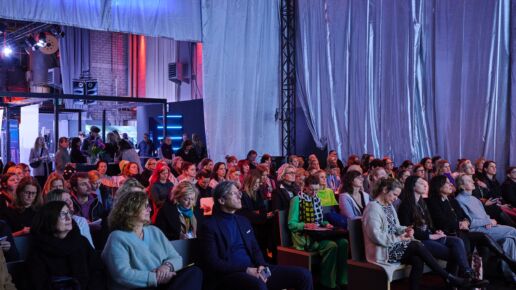
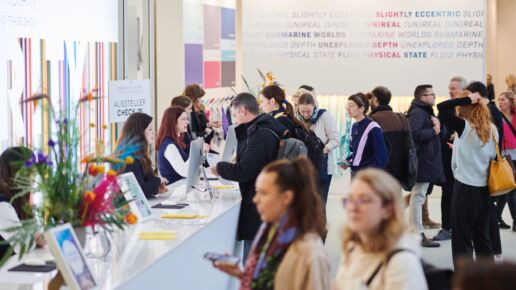
“We’re very pleased: MUNICH FABRIC START is and remains a central fixture for the fashion industry. Over the past few days, clarity and orientation have proven to be the current mega topics of our industry. Now is the time for everyone to reflect on their own strengths and focus on how to play to them. This applies to our visitors, exhibitors and ourselves as organizers. Our core competence is the creation of a space for business, inspiration and interaction. And we are told from all directions that this place will become even more important in the future. In this respect, we are proud that we have once again succeeded in creating it and are already looking forward to getting straight into planning the next season.”
Sebastian Klinder, Managing Director MUNICH FABRIC START Exhibitions GmbH
Frank Junker, Creative Director der MUNICH FABRIC START Exhibitions GmbH
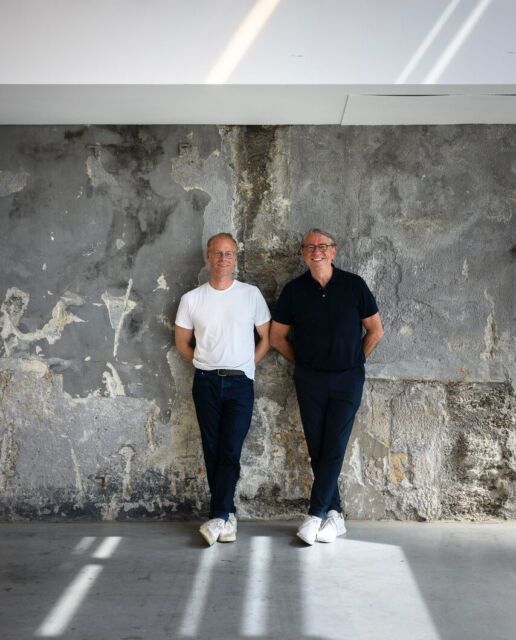
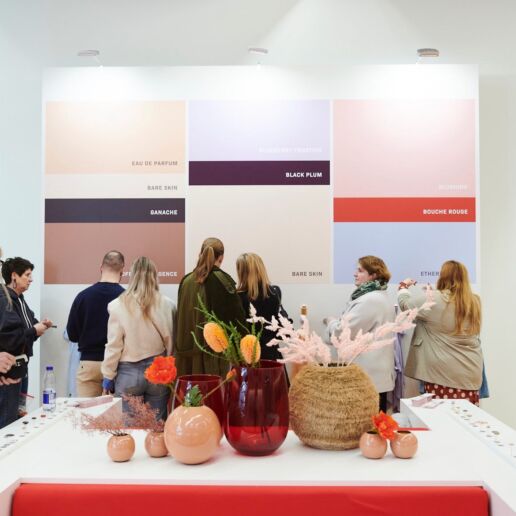
Trends: Spring.Summer 25
Looking at trends for Spring.Summer 2025, various developments emerged: on the one hand, a return to the familiar, the tried and tested, with a focus on craftsmanship and clear shapes. The nostalgia is partially broken up by complementary statement pieces from the athleisure or, in women’s fashion, lingerie sector. Denim is omnipresent in the coming season – not least because it is probably the most democratic fabric and can be translated into any quality and price category. In womenswear, there will be new interpretations of the men’s shirt, which will be deconstructed in its classic masculine forms. The focus will be on natural materials such as linen and hemp, not least in the area of new casual work wear, especially in combination with warm neutrals and broken facets of white. We will also continue to see lots of pastels – albeit in new nuances, balanced by an earthy colour palette.
This time, the main focus of the supplementary program was on sustainability – be it natural innovative fibers and their disruptive potential for a more sustainable fashion industry, recycling issues and the associated EU regulations that will challenge the industry, or helpful instructions on how various players can prepare for this today. Platforms such as KEYHOUSE play a major part in this transition by building bridges between young, creative thinkers, research and industry players.
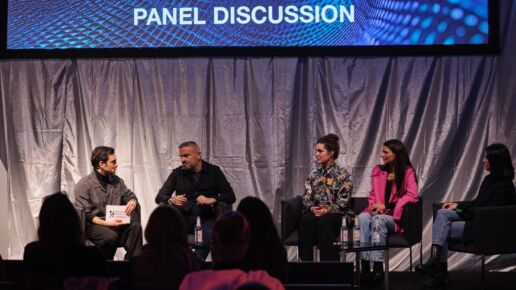
On January 23 and 24, BLUEZONE once again transformed the Zenith Area into the absolute denim hot spot. The entire blue-blooded community met here to explore the future of the denim industry. The transformation of the denim industry towards even greater sustainability remains a key topic: cradle-2-cradle concepts, innovative recycling processes and resource-efficient washing, dyeing and finishing technologies were often the focus of the collections presented, as well as stand and aisle discussions and trend lectures. The Denim Deal, which has now been signed by 53 market-leading denim companies, was initially presented in Germany at the BLUEZONE stage. It aims to make the use of recycled materials mandatory in new textile products. The Hall of Fame brought the BLUEZONE “Signature” leitmotif to life by showcasing personal pieces by fashion icons such as Jason Denham, Adriana Galijasevic, Adriano Goldschmied or Renzo Rosso and telling their respective stories. Personal encounters and exchange were also the motto of MUNICH FABRIC NIGHT, where all MUNICH FABRIC START exhibitors and visitors brought the dance floor to a boil in the Dampfdom at Motorworld on the evening of the first day of the show.
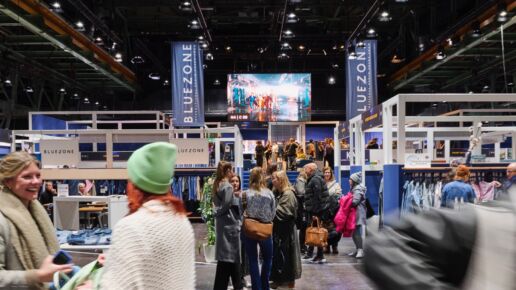
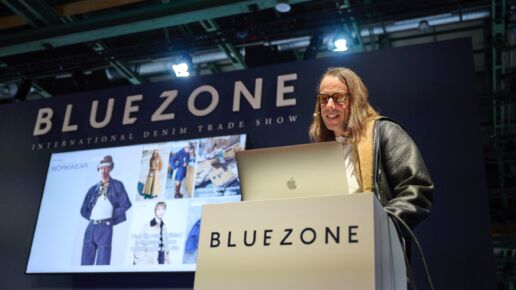
In just a few months’ time, the next key event for the European fashion industry will be the VIEW Premium Selection on June 18 and 19 at Motorworld to kick off the Autumn.Winter 25 season. The June event offers an initial inspiring overview of upcoming trends and innovations in the areas of Fabrics, Denim & Sportswear, Additionals and Design Studios for the coming season, and is therefore an essential time for quick ordering, innovations and developments in the fashion industry ahead of the important September event.
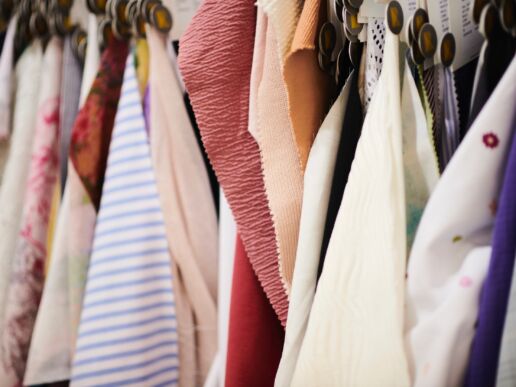
KEY FIGURES & HARD FACTS
Over the past three days, 11,700 visitors came to the Munich MOC and the Zenith Area. Many important brands, such as adidas, Akris, Alberto, Alpha Tauri, Anna van Toor, Armed Angels, Baldessarini, Bestseller, Betty Barclay, BMW, Bogner, Brax, C&A, Carhartt, Closed, Comma, Condé Nast, Digel, Diesel, Drykorn, Escada, Eterna, Ganni, Hessnatur, Holy Fashion Group, HSE, Hugo Boss, Inditex, Joop, Katag, Lagerfeld, Lanius, Lodenfrey, Mac, Maloja, Marc Cain, Marc O’Polo, März, Mey, More&More, Mustang, MyTheresa, Oui, Remei, Riani, Roxy, s. Oliver, Schumacher, Seidensticker, Sportalm, Talbot Runhof, Tchibo, Tom Tailor, Tory Burch, Windsor and Wolford were on site.
The visitors came from 58 countries, mainly from Eastern Europe, Germany, Italy, Scandinavia, the UK, the Benelux countries, but also from South America, the USA, the UAE, Saudi Arabia and Oceania. Complimented by a comprehensive supplementary program with prominent and international speakers from various areas of the industry and numerous opportunities for networking, MUNICH FABRIC START once again impressed with its integrated concept.
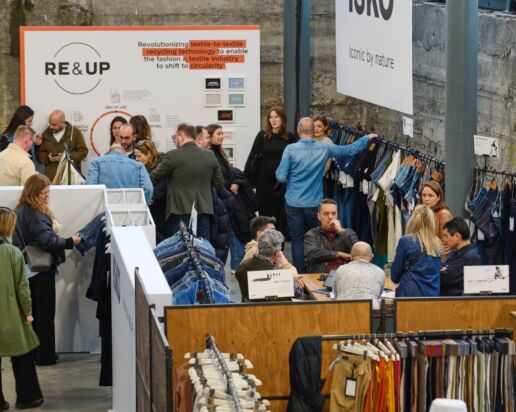
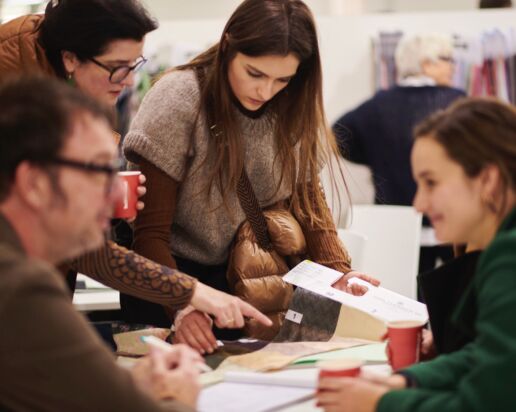
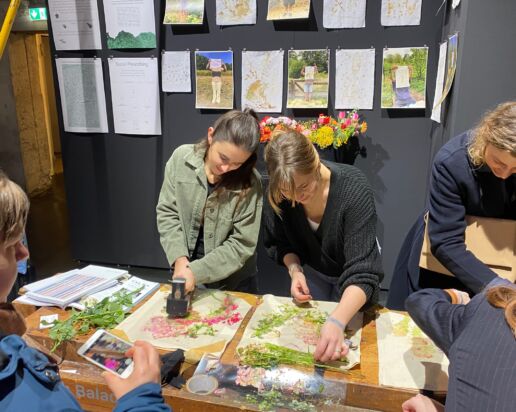
Further voices:
“For me, MUNICH FABRIC START is not just a trade show for inspiration, but for working. I get a good overview of the collections and suppliers here. The portfolio is very good. I make use of all fair days, have fixed appointments, order samples, make print developments. MUNICH FABRIC START is a well-organized platform. For me, the Munich location is also good and easy to reach.”
Catrin Schanz, Head of Design, Seductive
“MUNICH FABRIC START is a permanent fixture in our seasonal calendar and has absolutely established itself for us. Nowhere else do we have the opportunity to see so many collections in one go.”
Stefan Grupe, Design Specialist, Windsor
“In the textile industry, substantial technical innovation towards sustainability comes from research. The Keyhouse is the perfect platform for us to bridge the gap between research and practice. Sustainable Innovations as an interaction area for demonstrators and prototypes has proven effective again this January. Here, we meet the right industry partners, who transfer the great technological innovations from science into a scaled commercial implementation.”
Nicole Espey – Projektmanagement Office BioTexFuture
“MUNICH FABRIC START is such a great trade show. This season I worked really, really well with the colors of the Trend Forecasts. It was great that they were ready so early this time. We are actually finished with our concept. Our color themes are confirmed. As well when I look into winter. We always enjoy listening to the presentations, especially on the subject of sustainability. Unfortunately, we won’t be able to do that this time as we’ll only be here for one day due to the strike of Deutsche Bahn.”
Andiné Jenauth – Head of Design Womenswear, Eterna
“Platforms like Keyhouse are crucial for the industry – especially the next generation of creators, who want to work towards a more sustainable future. Discussing and making connections with other creatives and experts opens up new perspectives and helps to reinspire me for my own project!”
Natasha Amisha – Founder Honestly Hemp
“This was our first time exhibiting at BLUEZONE and it was great – interested parties from pioneering eco labels to luxury brands approached us about cooperation opportunities. The message is clear: you will only be successful in 2024 if you can offer real and relevant product innovations.”
Sebastian Thies – nat-2.
“BLUEZONE has proven to be the right platform for us to launch The Denim Deal in Germany. It has shown us the power of collaboration and the impact it can have on the circular economy. We believe that by bringing more players together and sharing the same values, we can make a real difference in the denim supply chain. The industry is recognizing the importance of being a part of this movement, and we are excited to continue working towards our goals. We’re looking forward to more exciting activities during the next show in September.”
Nicolas Prophte – Brand Representative of DENIM DEAL Steering Committee
“Our linear supply chains need to change into circular supply chains. We need to link the people – the weavers and spinners, the collectors and the brands – to unify our language and to work towards the same goals. We need a spirit of collaboration. Let’s get ready Germany! Before EPR (Extended Producer Responsibility) is coming. We have to show it’s possible. Now. And together.”
Romain Narcy – Partner Strategy and Innovation, Ereks
“A lot has changed because most fabric suppliers now come to us directly. But I still think it’s important to go to trade shows: for first impressions, presentations and the atmosphere. We still add a day in the city center. MUNICH FABRIC START is a must-attend event and we always enjoy coming.”
Jörg Labatz – Division Head Cartoon/Vera Mont, Betty Barclay
“The demand for sustainable fabrics is ever-increasing. We developed a unique transfer print procedure which is considerably more resource-efficient and environmentally friendly than traditional dyeing techniques, which require a lot of water and energy. And: it has no effect on the material itself, no matter if Tencel or denim. BLUEZONE is the perfect occasion for us to present this solution to our European customers and build on the success we already have in other markets.”
Serhat Tosyalı – Sales Director Prosperity Textile
Discover more industry-changing innovations at our upcoming trade fairs:
Trend Preview for SPRING.SUMMER 25
The new summer season’s title is Clarity. It describes the longing for clear structures and simplification against the backdrop of our present environment and the growing complexity in many areas. The search for clarity ranges from the call for transparent production and supply chains to structured fashion themes with a meaningful use of colours, silhouettes and materials. Reduction and realism, paired with imagination and creativity, create a new awareness of quality, sustainability and design competence.
The juxtaposition of rediscovered craftsmanship and new technologies, urban and rural spaces, self-questioning and social cohesion, decoration and function reflect the momentary complexity. They are opposites that inspire each other and raise awareness of the need for quality and responsible consumption. Yet, what they all have in common is the desire to face challenges with confidence and creativity. The latter thrives at the interface between new technologies and tradition. Especially where the past and the future form common ground and the familiar mixes with the new.
The five seasonal themes reflect a broad spectrum that ranges from newly interpreted craftsmanship to the rediscovery of one’s own “I”, the synergy between city and country and the fascination for the unknown. The final theme is responsible optimism, a reminder to be active and confident in shaping our future.
CLARITY presents 5 trends for Spring.Summer 25:
SENSUAL MIND
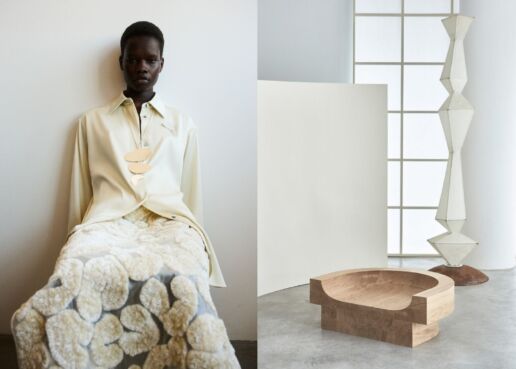
Source:
JIL SANDER, BENNI ALLAN
SENSUAL MIND
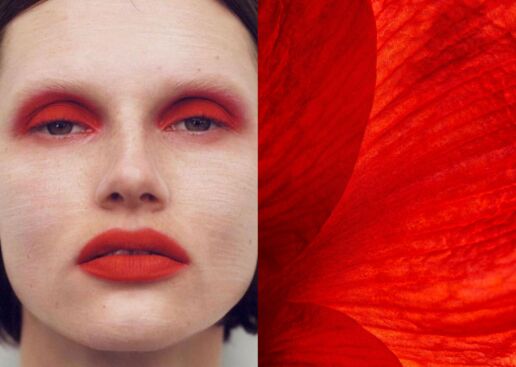
Source:
ZOE GHERTNE, WOLFGANG HASSELMANN
PROVINCITY
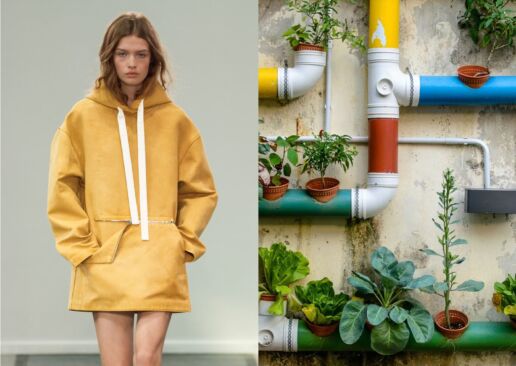
Source:
JW ANDERSON,
JAKOB FISCHER
UNCHARTED
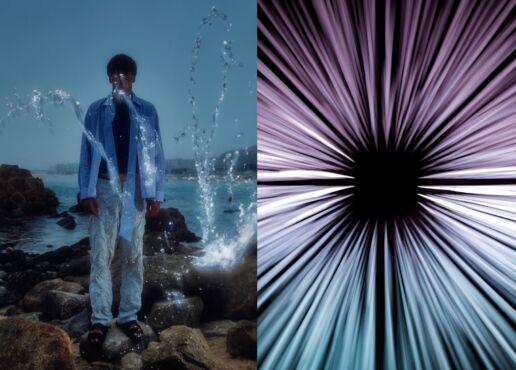
Source:
SZYMON STEPNIAK, CHRISTOPHER BURNS
JOY INSIDE
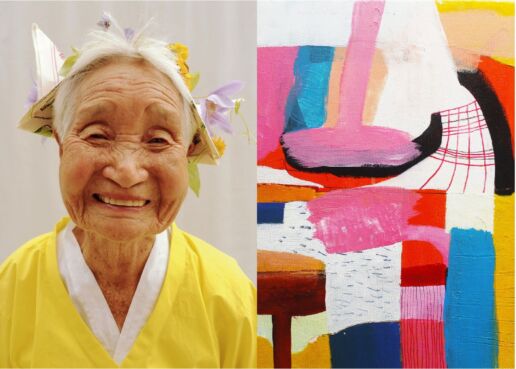
Source:
MIN HYUN-WOO, THE ARTLING
DON'T MISS:
INSPIRATION & INFORMATION FOR YOUR COLLECTION DEVELOPMENT - COLOURS, MOODS, SHAPES & STYLES
These 5 CLARITY trends as well as the 5 denim, street and sportswear trends of BLUEZONE under the leading theme SIGNATURE can be found as a comprehensive trend analysis with detailed colour cards, inspiring materials, moods, prints and styles in our TREND FORECAST – available in the trend forums of Foyer 2, 3 and 4, the trade show office Room B 009 or at the Bluezone check-in counter.
TREND PACKAGE AUTUMN.WINTER 24/25
TREND BOOK & COLOUR CODE
150 EUR
TIMELY TIMELESS
The new minimalism is more than a “palate cleanser” that is intended to give our senses a brief opportunity to recover before the next wave of opulent taste experiences hits them again. It’s sure to linger simply because it is linked to our worldview. In contrast to previous generations, for us “simple” no longer just means “simple and poignant”, but also “sustainable because timeless”.
Two seasons ago, the DMI FASHION DAY at MUNICH FABRIC START was about the question “Should we slow down or speed up?”. We had prepared you for the fact that the desire to slow down fashion would soon reach the mainstream. A recent survey confirms that fashion trends that change too quickly are viewed increasingly critically: three quarters of all women are of the opinion that there are too many and too extreme trends. 65% believe trends are becoming less and less important. And almost 94% pride themselves on saying that they buy regardless of trends.
Longevity is currently very popular. And that doesn’t just mean more solid quality, but also and above all a more timeless design. Fashion is responding to this growing demand for timeless design with increasingly understated design. In this respect, the new minimalism continues the by now century-old tradition of “less is more”, but in a completely new zeitgeist setting. A lot of what is wrongly labelled “Quiet Luxury” actually doesn’t want to look like old money, but rather just be timeless.
Paradoxically, it is currently trendy not to be trendy. People want clothes that look timeless. But then again, paradoxically, timelessness is not timeless either. So we are faced with the challenge of creating a look that is trend-independent in a trendy way and timeless in a contemporary way.

Carl Tillessen
“The debut last season was the best confirmation of our concept of providing trend information with the DMI FASHION DAY exactly when it is needed, namely at the moment when the course for the next season is set with the selection of fabrics. I’m really looking forward to meeting and exchanging ideas with everyone in Munich.”
Carl Tillessen, CEO DMI
INFORM & INSPIRE YOURSELF AT THE MUNICH FABRIC START AT DMI:
You can find out how you can make this work for you in a personal conversation with the DMI analysts. Feel free to contact us anytime.
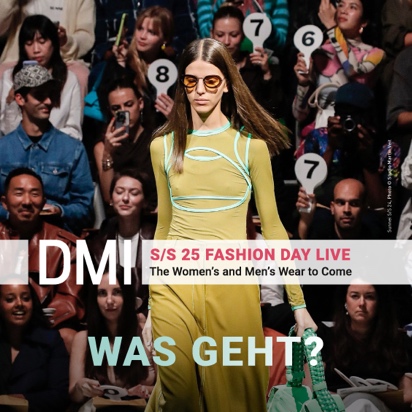
Discover more industry-changing innovations at our upcoming trade fairs:
Digitale Klarheit im Design - ASSYST
Digital processes elevate design to a new level, but only when the result is right and quick. To ensure the flow of ideas and data, Style3D | Assyst passionately develops and confidently explores new paths.
In the 3D simulation, the dress moves as if caught in a breeze. Whether it‘s a skirt or a down coat, the movement looks so realistic that one tends to forget the computer. Everyone in design, technical development, and pattern teams is meant to experience this seamless connection between the digital and the real world. Fabric, human, and pattern are realistically represented, pushing the boundaries of technology. The results are captivating, opening up new possibilities in clothing development and fabric design.
Digital fabrics facilitate collaboration
With both physical and digital fabric versions, manufacturers can provide better guidance. At events or in their own showroom, fabrics are collectively examined. The scanned digital version can be recolored, enlarged, experimented with in designs, and shared with colleagues on-site or later in the company. Once everyone agrees, the fabric is purchased and ideally produced afterward.
3D design and 2D patterns merge
A common scenario: everything looks good digitally until the pattern comes into play. Suddenly, a seam line on the back or inserts on the sleeves are necessary, disrupting the design idea. Numerous approval rounds like these are required in developing a new collection. It‘s much faster when the design interacts directly with the production-ready pattern. The designer doesn‘t need to switch to the CAD system; the pattern stays in the background, automatically updating and reapproving for significant changes.
3D clothing reaches customers
From showroom to eShop or store, it can take weeks … or just days. With the right tools, 3D designs transform into high-quality marketing and sales visualizations. All with the characteristics of the digital product matching the real one, complemented by suitable digital experiences.
Artificial Intelligence begins to create value
When rapid new ideas are needed, inspiration is crucial. AI, like in a brainstorming session, helps generate fresh ideas and refine one‘s concept. Designs can be created quickly, and unsuitable versions can be sorted out promptly. The right design can be replicated and further refined.
Fashion undergoes sustainable change
When design (3D) and production (2D) seamlessly connect, the apparel industry changes significantly. Design, pattern, and technical development can work more easily, sustainably, and cost-effectively, resulting in less fabric and fewer patterns throughout the process. The remarkable aspect is that this revolution requires minimal effort for individuals. Everyone can continue working in their familiar systems, and the integration of systems leads to a closer collaboration with clear results. Each digital design matches the real product, providing extra clarity that is particularly valuable for design teams, thanks to the benefits of digitization.
WE LOOK FORWARD TO WELCOMING YOU IN
→ HALL 2 | D 24 or digitally at www.assyst.de
PROGRAM:
AI for inspiration and promotion
Digital Knitwear Design with KM.On
3D/2D.Connect – Design with product-ready pattern
Digital Fabric for brands and manufacturers
Collaboration – on site, remote or worldwide
OUR PRESENTATIONS IN THE KEYHOUSE:
Design from idea to shelf – the new possibilities for designers
with AI and 3D/2D.Connect from Style3D | Assyst
Global design & production – 3D/2D CAD in the supply chain
[Best Practice]
Discover more industry-changing innovations at our upcoming trade fairs:
ORTA x Long John
ORTA x Long John Presents: The biggest sustainable jeans!
The well-known Turkish denim manufacturer ORTA, celebrated its 70th anniversary last year teams up with Wouter Munnichs, founder of online denim magazine Long John and freelance denim specialist for brands and retail, to create the biggest sustainable pair of blue jeans ever made. This huge collaboration jeans will be on display at denim fabric trade show Bluezone in Munich, Germany on the 23rd and 24th of January, 2024.
This January, ORTA and Long John will join forces in a very special jeans collaboration. Together they developed the biggest sustainable jeans ever produced to set a new milestone within the denim industry. This display jeans is made with a waist size 133 and a total length of around 4,5 meters. For the inspiration of this collaboration jeans, they looked at the past when huge display jeans were made as a promotion for a denim brand. These originals were used to showcase a jeans brand in a unique and unmissable way in front of retailers and at rodeo events in the West of America from the 1920’s onwards.
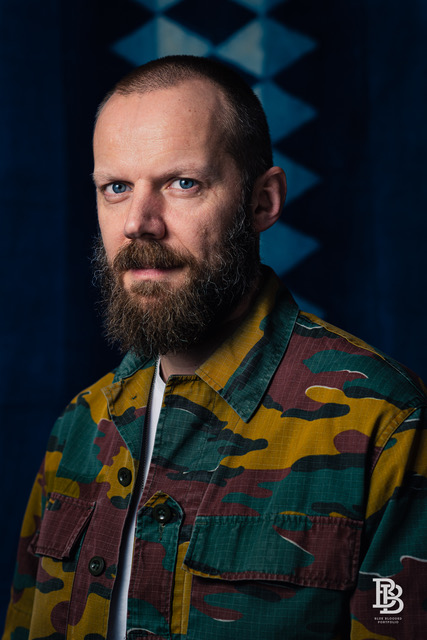
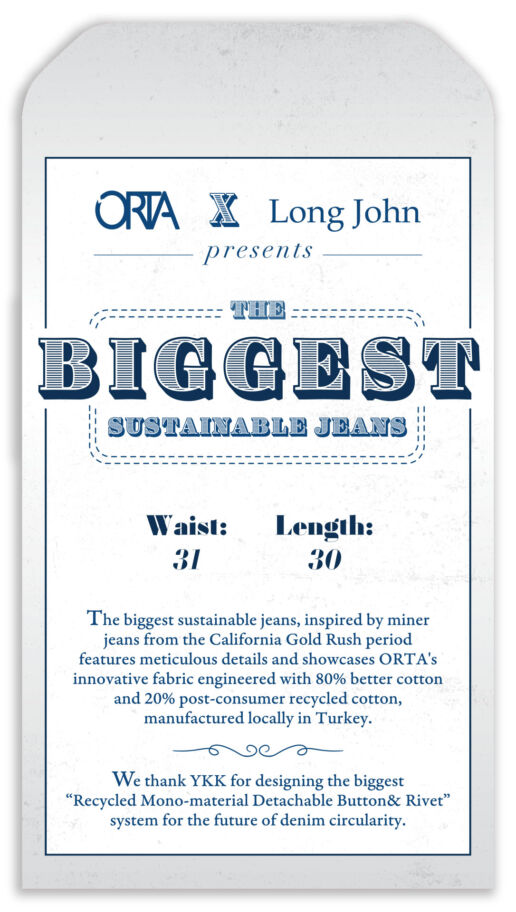
Showcasing the new sustainable denim fabric
The idea of making something that stands out came when ORTA developed a new sustainable denim fabric with code 4853A, colored Steel Blue. This rigid 2/1 Z twill denim fabric weighs 10.6 oz and is made with a composition of 80% better cotton + 20% post-consumer recycled cotton. The fibers as well as the fabric were all manufactured in Turkey locally. As a long partner of ORTA, Long John sat down with the ORTA to think about a way they could present this innovative denim fabric that can’t be missed by each visitor of the Bluezone trade show in Munich. Soon, they were thinking of creating this enormous pair of jeans.
The inspiration for the display jeans
The design of the ORTA x Long John display jeans is inspired on the original miner jeans that were worn during the kick-off of the so-called ‘Gold Rush’ period around 1850 in California, USA. During this period, many people from all over the world came to California when gold was discovered in the mines. To get the job done, a sturdy and durable pair of blue jeans was needed. This is seen by many as the kick-off of the history of denim. The rest is history.
The ORTA x Long John display jeans is produced with an eye for detail, just like the originals. Key detail features on this pair are included such as one back pocket, a cinch back, suspender buttons on the waistband, and even a crotch rivet on the front. Also, for this display pair, a huge hangtag is produced, the same as a back patch from sustainable cotton fabric showing both ORTA and Long John logos.
Displayed at Bluezone
The biggest sustainable jeans ever produced by ORTA x Long John will be showcased for the very first time at the denim fabric trade show Bluezone in Munich on the 23rd and 24th of January. Don’t miss this chance to get yourself photographed in front of this big 133-sized pair of blue jeans.
This might be also interesting for you:
Sustainable Innovations – Ilse Kremer
26. August 2024
Fungi use biochemical processes to produce pigments, meaning they have a different impact than fossil-based heat and extraction processes.
BLUEZONE NEWS – SAAT MUNICH
25. August 2024
Inspired by the aesthetic of heritage motorbike wear and made from innovative denim, Saat Munich together with...
KEYHOUSE NEWS – T-Rex
25. August 2024
The T-REX (Textile Recycling Excellence) Project brings together 13 major players from the textile industry along with research institutions to create a harmonised EU blueprint for closed loop sorting, and recycling of household textile waste.
FABRIC HIGHLIGHTS & MATERIAL NOVELTIES FOR AUTUMN.WINTER 25/26 – PART IV
23. August 2024
From classics to metallics, the heroes of Raschel and fancy jerseys, Target, are again widening the scope of their collection.
Sustainable Innovations – Biotexfuture
22. August 2024
By working with industry and research partners, BIOTEXFUTURE supports the development of bio-based textiles through various projects and innovation spaces.
KEYHOUSE NEWS – Archroma
21. August 2024
In the atmospheric industrial charm of KEYHOUSE, Hall 7, progressive suppliers and global players from cross-industry sectors will be showcasing their latest new developments and innovations.
BLUEZONE NEWS FOR SEPTEMBER 2024 – PART II
20. August 2024
ISKO’s FW 25-26 collection combines sophisticated visuals, classic heritage, and vintage-inspired designs, as always coupled with increasingly sustainable practices and environmental responsibility.
Additionals Trends Autumn.Winter 25/26 – Part 3
19. August 2024
Whether you’re designing for style, for sustainability, or two bring those two worlds together, Checkpoint has the branding solutions, tailor made for your brand.
New Fabric Collection by Annanemone
16. August 2024
All of Anna's designs are created by hand mostly through the use of gouache and her work is greatly influenced by her love of nature, animals and plants that are not often seen depicted on clothes and products.
FABRIC HIGHLIGHTS & MATERIAL NOVELTIES FOR AUTUMN.WINTER 25/26 – PART III
15. August 2024
Textiles are the fabric from which our passion is woven.
Diversity in Dynamics
Marvelling at the levels of sophistication and innovation modern fabrics have attained and continue to breach, it is easy to forget that our relationship with textiles is one of the most intimate and primal ones we have. Granted, today’s creations are (thankfully) far removed from the scratchy cloth our ancestors wore huddled around the fire.
But over the course of time, our relationship with textiles has changed. While we have – technically and commercially – never been closer to textiles, ambitiously engineering fabric compositions to cater to an increased demand of sustainability, for instance, we are ironically also stepping further away emotionally from what was once – literally – closest to us. Today, our engagement with textiles is largely dependent on the prism through which we choose to experience and value it:
We have increasingly come to approach textiles as objects of research and science, questioning what characteristics new fabrics ought to have and how existing textiles can be improved to comply with the ever-changing demands of the market. Impressive examples of such science-led approaches are two projects within the BIOTEXFUTURE-cluster, led by the Institute for Textile Technology (ITA) and the Chair for Technology and Organizational Sociology (STO) at RWTH Aachen together with their industry partner adidas. Within BIOTEXFUTURE, they investigate the transition of the textile value chain to bio-based materials, including alternatives to conventional elastane (CO₂Tex), or the establishment of bio-based polymers in the industry (BIOBASE).
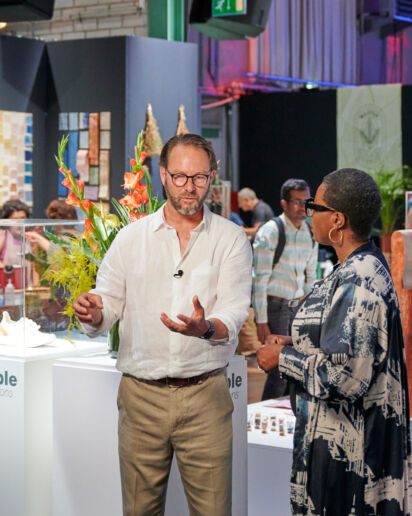
Of course, textiles also lend themselves to in-depth material exploration, analysing intricacies of production and means of (p)rethinking and challenging standards. Think of leather and its unique characteristics – who would have thought something strikingly similar could be crafted from a hemp plant, as illustrated by Lucas Fuhrmann’s “Revoltech”? Or going so far as to almost brutally decontextualize a biomaterial like feathers from their original purpose of insulation, submitting it completely to the functionality of aesthetics, as Suzanne Corcessin has done with “Being Plucked”.

Simon Angel
And still, textiles can be a means of social connection – looking at the emotional component of fabrics, their functionality and the effects they have on others in public and private interaction, reconstructing relationships and the marriage between human and textile. Beautiful testaments of such exploration are the works of Paul Schaffer, whose collection of woven fabrics aims to foster appreciation for the interconnectedness of organisms, Sophie Conroy, who investigates the metaphysical significance of textiles as a connection between the body and the environment, and Elizabeth Balado’s “Blooming Minds: Social Printing”.
Are we leading or following completely different dynamics? Are we at risk of sacrificing artistic intimacy for scientific progress? Are we winning or losing touch? It’s not about being right or wrong, but a question of prism. The Sustainable Innovations Forum proves that it is possible to navigate these different dynamics. Take Cloudwool, for example: with a diverse portfolio and numerous opportunities to work with their product, they have attracted the attention of the likes of Grenson and Balenciaga, effectively demonstrating that it IS possible to unite the different dimensions of soul and science, while successfully positioning their product at the same time.
Feel the difference in dynamics for yourself – come and meet us in the KEYHOUSE and experience the Sustainable Innovations Forum.
Best wishes,
Simon
INFORM & INSPIRE YOURSELF AT THE MUNICH FABRIC START
IN THE SUSTAINABLE INNOVATIONS AREA IN THE KEYHOUSE – H5!
Discover more industry-changing innovations at our upcoming trade fairs:
GANNI – Fashion made from next-gen materials
Munique magazine contributor Muchaneta ten Napel, recently had the opportunity to sit down with Lauren Bartley, the Chief Sustainability Officer at GANNI to dive into the brand’s sustainable initiatives and vision for the future of fashion.
Muchaneta ten Napel (MTN): “Lauren, can you share with us GANNI’s journey towards sustainability and how it’s integrated into your brand’s ethos and fashion design?”
Lauren Bartley (LB): “Absolutely, Muchaneta. It starts with our founders Ditte and Nicolaj, who are personally passionate about the topic of sustainability and hacking the fashion system – it’s at the core of everything we do at GANNI and has been key to our progress in the area. In 2019, we created our first sustainability strategy the GANNI Game-plan comprised of 44+ goals to reach by 2023 surrounding People, Planet, Product and Prosperity. In 2022, we completed our first strategy and became a B Corp Certified company and now we are well in to our second strategy Game-plan 2.0, running until 2025 – which creates further impact to our business model and operations.”
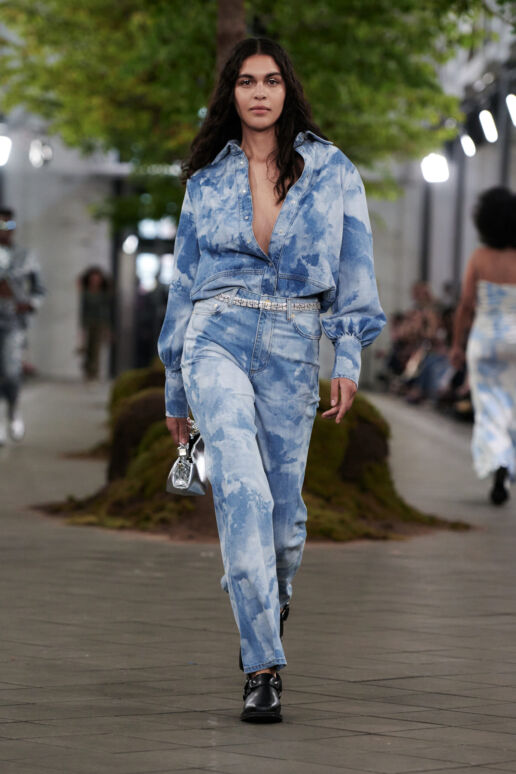
Future Denim Shirt med in Circulose® by Renewcell – a natural material made via textile waste, and Circulose®, which transforms textile waste into a new material without the need for cotton fields, oil, or trees
Our GANNI Bou bag in Ohoskin, made from orange and catus 100% Ohoskin (48% plant-based content, 52% Recycled Plastics)
Photo by Mathias Nordgreen
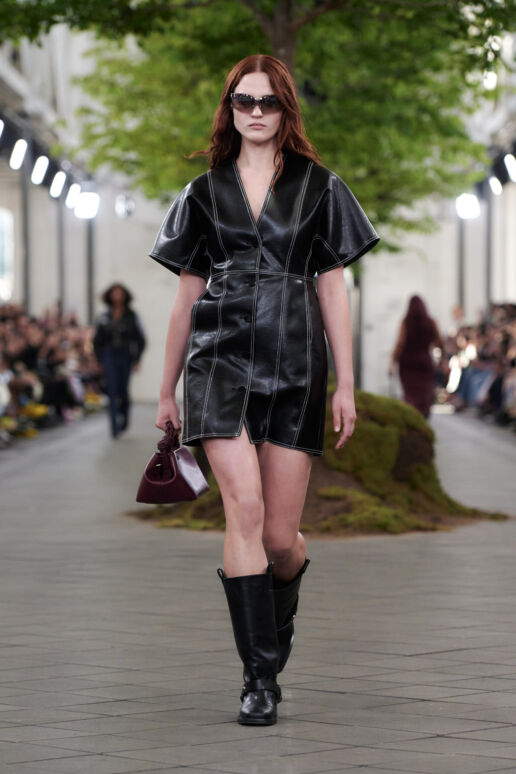
Dress in Oleatex – a plant-based olive leather alternative made from waste streams from olive oil production.
Our GANNI Bou bag in Ohoskin, made from orange and catus 100% Ohoskin (48% plant-based content, 52% Recycled Plastics)
Photo by Mathias Nordgreen
M.T.N.: “What are the unique challenges and opportunities you’ve encountered in incorporating next-generation materials into GANNI’s collections?”
L.B.: “The opportunity is to re-think fashion as we know it and empower our designers to do what they do best – get creative – and create something beautiful. We’re committed to working with fabric innovation as it’s the only way we will reach our ambitious carbon reduction goals – a 50% absolute carbon reduction by 2027. By 2025, 10% of our collections will be made from Fabrics of the Future. There are obviously challenges too, especially around scalability and the commerciality of the materials and that’s why it’s so important for us to invest and encourage other brands to invest too, because we all desperately need the solutions the innovators are offering. Commercial viability, but it’s essential to invest in these innovations.”
M.T.N.: “How has GANNI’s experience been in piloting new textiles on a smaller scale, and what impact has community feedback had on these initiatives?”
L.B.: “We will always introduce a new fabric innovation through a pilot project, to test and learn and get feedback from our community. So far, the response has been extremely positive. For us it’s about seeing these next-gen materials as something new and not comparing it to existing materials and fabrications.”
M.T.N.: “Navigating the costs and investments in sustainable materials is crucial. Can you discuss GANNI’s approach?”
L.B.: “Its early days, for now we have piloted around 10 material innovations, but the challenge is really to scale them to a commercially viable status. The pilots are an investment for GANNI, with no clear return on investment, that is not a sustainable model for any company and that is why we need these innovators to succeed and for GANNI to do whatever we can to help make it possible. We will have Renewcell’s Circulose in our main collections in 2024 and scaled and it’s exciting to see how that resonates with our community.”
M.T.N.: “Could you share insights into GANNI’s strategies for circular fashion and waste management?”
L.B.: “As part of our Game-plan 2.0 and commitment to Circularity, we have a goal of 5% of revenue coming from circular business models by 2025 from a 2021 baseline. With our Circular Business Models we look at new business models that have potential to reimagine the fashion industry as we know it. Currently, we are revising the Circularity strategy and will be sharing more on our goals within the pillars ‘Designed for Circularity’, ‘Recycling’ and ‘Circular Business Models’ in early 2024.”
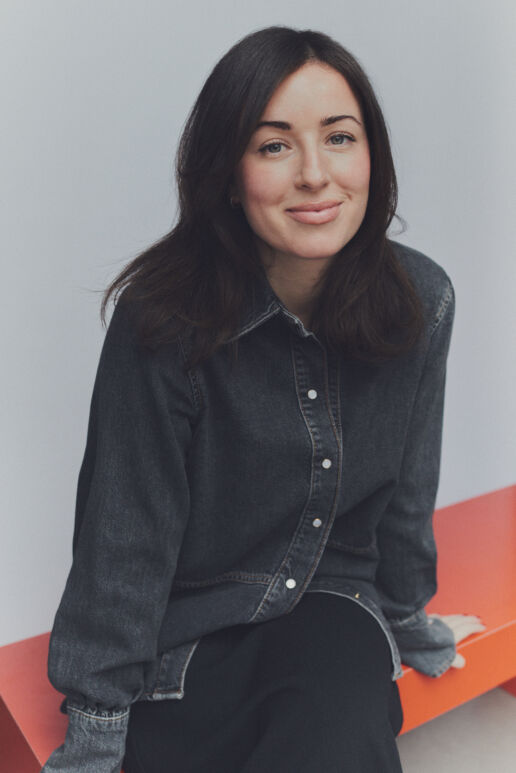
M.T.N.: “How does GANNI approach consumer education regarding sustainable fashion?”
L.B.: “Our biggest communication channel on Responsibility is our instagram account @GANNI.Lab where 100% of the feed is dedicated to our journey in becoming the most responsible version of ourselves. This is very much about what GANNI needs to do and where we are on our journey and does not put the onus on the end consumer. With all our communication we try to speak to our community in a meaningful and honest, not perfect way, showing the hard stuff, the stuff we didn’t get right, as much as we show the stuff we nailed.”
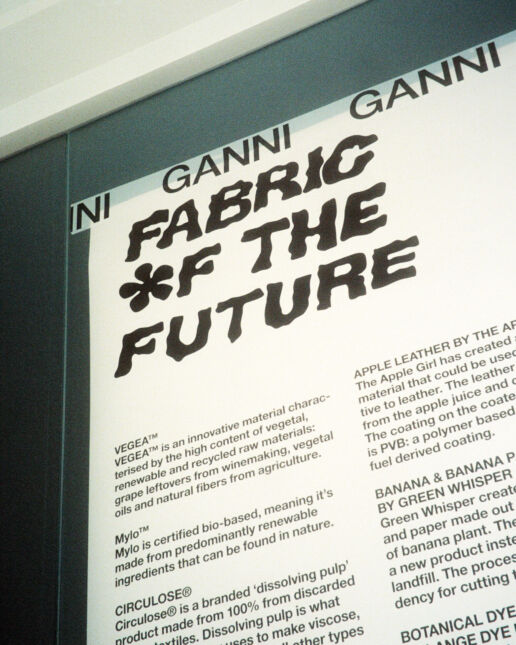
M.T.N.: “In the context of forming partnerships, what insights can you share about GANNI’s collaborations?”
L.B.: “We believe in the power of industry collaboration, no brand will succeed in a sustainable transition alone. GANNI works with over 30 material innovators and 13 partners and software solutions to help us progress on environmental sustainability, social sustainability and traceability. We would not be where we are without our partners.”
M.T.N.: “As the Chief Sustainability Officer, what is your vision for the future of sustainable fashion?”
L.B.: “For me, the onus is on the brands to offer more sustainable solutions to its customers – whether that be more responsible fabrics, transparent supply chains, workers paid a living wage and the adoption of new business models such as resale. We cannot force people into sustainable fashion, but by making it convenient, accessible and raising the education and awareness of some of the challenges and ultimately solutions in the industry, we can encourage more responsible consumption and behaviour. It’s a brave endeavour for a brand to recognise their own shortcomings, but being transparent, being honest and not perfect solidifies the value and integrity of the company- which ultimately, we can all appreciate as consumers”.
Are you interested in more in-depth facts and figures on the new textile industry?
Visit the Shape Innovate Lounge in H5 | 04 or take part in the mini-lectures in the Keyhouse.

About the author
Muchaneta Ten Napel is the founder of Shape Innovate, a company that critically examines the economic impact of the fashion industry and publishes comprehensive, data-driven research, white papers and forecasts that shed light on the fiscal dynamics of both fast fashion and sustainable fashion practices.
In addition to running Shape Innovate, Muchaneta is the driving force behind FashNerd.com, her own digital platform dedicated to the latest tech developments in the fashion industry. As well as writing for her platform, she has also contributed to Vogue Business and is currently a senior contributor at The Interline.
Muchaneta is a lecturer at London College of Fashion (UAL), has taught at Conde Nast College of Fashion and UCL and has held a workshop at Zurich University of the Arts to share her extensive knowledge.
With extensive industry experience, Muchaneta is also a fashion innovation consultant and has authored in-depth research for companies such as LVMH Atelier.Muchaneta, who was actively involved with the UNFCC and Climate KIC during COP27, is now Chair of the Cultural and Creative Industries (CCI) Taskforce for the UN Climate Change Global Innovation Hub.
To further expand her influence, Muchaneta hosted the Innovation Stage at the Global Fashion Summit in Copenhagen and is a board member of the Fashion Innovation Center, where she contributes her strategic insights to further revolutionise the industry.
Muchaneta ten Napel | m@shapeinnovate.com
This might be also interesting for you:
Sustainable Innovations – Ilse Kremer
26. August 2024
Fungi use biochemical processes to produce pigments, meaning they have a different impact than fossil-based heat and extraction processes.
BLUEZONE NEWS – SAAT MUNICH
25. August 2024
Inspired by the aesthetic of heritage motorbike wear and made from innovative denim, Saat Munich together with...
KEYHOUSE NEWS – T-Rex
25. August 2024
The T-REX (Textile Recycling Excellence) Project brings together 13 major players from the textile industry along with research institutions to create a harmonised EU blueprint for closed loop sorting, and recycling of household textile waste.
FABRIC HIGHLIGHTS & MATERIAL NOVELTIES FOR AUTUMN.WINTER 25/26 – PART IV
23. August 2024
From classics to metallics, the heroes of Raschel and fancy jerseys, Target, are again widening the scope of their collection.
Sustainable Innovations – Biotexfuture
22. August 2024
By working with industry and research partners, BIOTEXFUTURE supports the development of bio-based textiles through various projects and innovation spaces.
KEYHOUSE NEWS – Archroma
21. August 2024
In the atmospheric industrial charm of KEYHOUSE, Hall 7, progressive suppliers and global players from cross-industry sectors will be showcasing their latest new developments and innovations.
BLUEZONE NEWS FOR SEPTEMBER 2024 – PART II
20. August 2024
ISKO’s FW 25-26 collection combines sophisticated visuals, classic heritage, and vintage-inspired designs, as always coupled with increasingly sustainable practices and environmental responsibility.
Additionals Trends Autumn.Winter 25/26 – Part 3
19. August 2024
Whether you’re designing for style, for sustainability, or two bring those two worlds together, Checkpoint has the branding solutions, tailor made for your brand.
New Fabric Collection by Annanemone
16. August 2024
All of Anna's designs are created by hand mostly through the use of gouache and her work is greatly influenced by her love of nature, animals and plants that are not often seen depicted on clothes and products.
FABRIC HIGHLIGHTS & MATERIAL NOVELTIES FOR AUTUMN.WINTER 25/26 – PART III
15. August 2024
Textiles are the fabric from which our passion is woven.
STELLA BLU PRESENTS ITS FIRST COOLTRANS DENIM COLLECTION MADE WITHOUT INDIGO
Stella Blu is very proud to announce to be the first Denim mill in the world to adopt the use of NTX Cooltrans – the revolutionary waterless coloration technology into its production of denim & colored denim fabrics.
The coloration process happens with extreme precision and consistency every time and is applicable to almost any fabrics, natural, cellulose-based or synthetics man-made without the need for heat and over 90% reduction in water usage without compromising the fabric’s engineered feel or functional performance.
Conventional denim has an extensive use of water, heat and chemicals starting from the initial processes of fabric making – dyeing yarns into several indigo baths – all the way down to laundry processes to create that vintage distressed look.
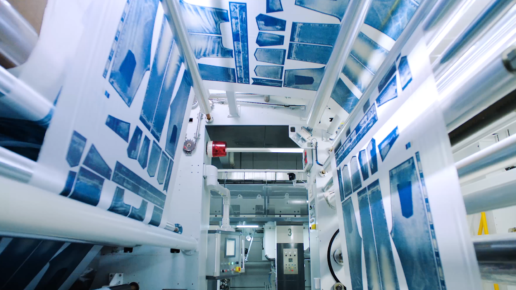
“With Cooltrans, we are able to completely eliminate these two processes.”, says Marco Stefanelli, director of marketing & business development at Stella Blu. “We start from a white PFD fabric and then the coloration process happens without heat at both sides simultaneously in only one single pass—the front face gets the printed washed look and the back side face gets printed with the twill line or any other pattern the client’s desire.”
This technology opens up extremely exciting possibilities. For instance, clients could have a single quality greige and print nearly infinite combination of aesthetics. By doing so, they can drastically improve the speed to market with much lower SKUs.
Many denim brands today maintain extensive material libraries, consisting of well over 500 different types of fabric, solely for the purpose of achieving a desired look. However, with Cooltrans, the aesthetic can be completely independent of the fabric composition. By calibrating the process to a specific fabric base, brands can achieve a wide range of aesthetics on a single twill type, resulting in tremendous costs savings.
Furthermore, addressing the environmental impact of indigo dye is a shared concern within the industry. Cooltrans is seen as a promising solution to reduce the toxicity associated with indigo dye as there is no indigo involved in the entire process, which is an additional key point that many brand houses view it favourably.
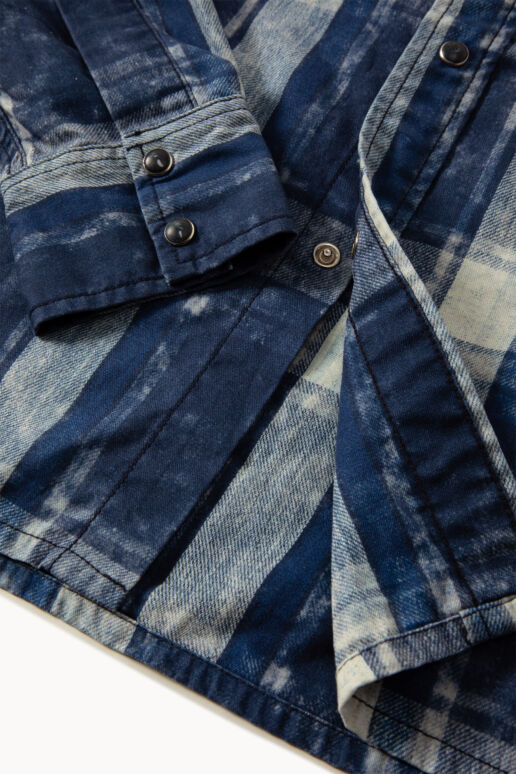
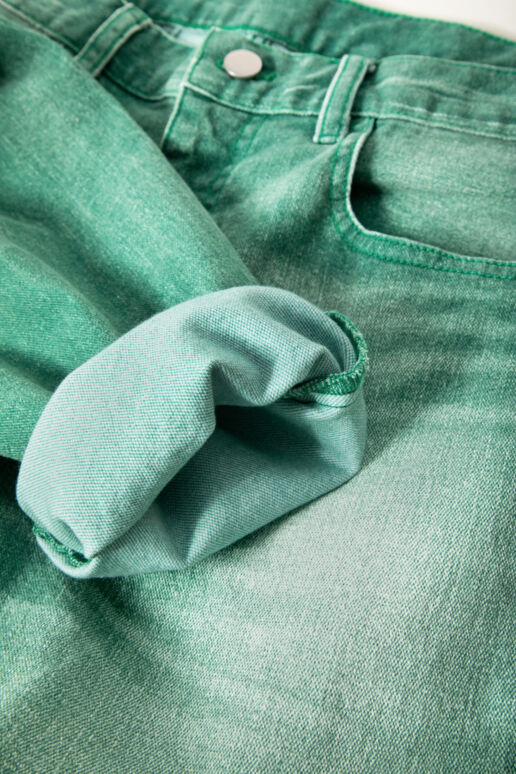
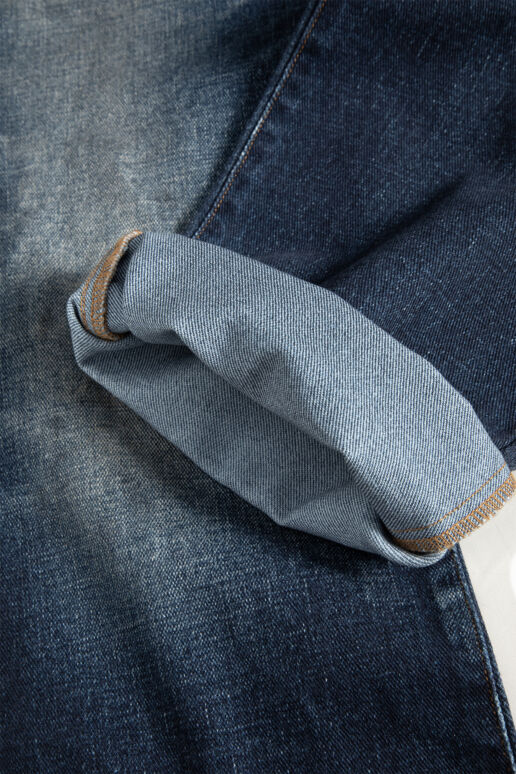
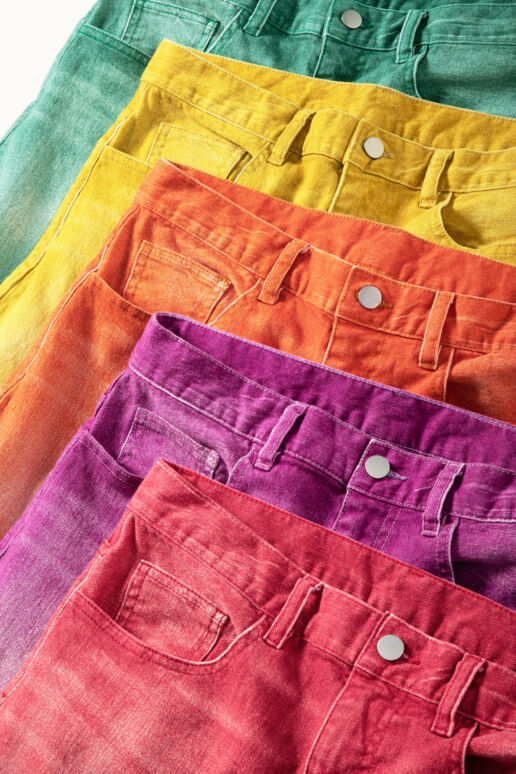
Meet the Stella Blu Team at Bluezone in Hall 7 | B 16.
This might be also interessting for you:
FABRIC HIGHLIGHTS & MATERIAL NOVELTIES FOR AUTUMN.WINTER 25/26 – PART IV
23. August 2024
From classics to metallics, the heroes of Raschel and fancy jerseys, Target, are again widening the scope of their collection.
Sustainable Innovations – Biotexfuture
22. August 2024
By working with industry and research partners, BIOTEXFUTURE supports the development of bio-based textiles through various projects and innovation spaces.
KEYHOUSE NEWS – Archroma
21. August 2024
In the atmospheric industrial charm of KEYHOUSE, Hall 7, progressive suppliers and global players from cross-industry sectors will be showcasing their latest new developments and innovations.
BLUEZONE NEWS FOR SEPTEMBER 2024 – PART II
20. August 2024
ISKO’s FW 25-26 collection combines sophisticated visuals, classic heritage, and vintage-inspired designs, as always coupled with increasingly sustainable practices and environmental responsibility.
Additionals Trends Autumn.Winter 25/26 – Part 3
19. August 2024
Whether you’re designing for style, for sustainability, or two bring those two worlds together, Checkpoint has the branding solutions, tailor made for your brand.
New Fabric Collection by Annanemone
16. August 2024
All of Anna's designs are created by hand mostly through the use of gouache and her work is greatly influenced by her love of nature, animals and plants that are not often seen depicted on clothes and products.
FABRIC HIGHLIGHTS & MATERIAL NOVELTIES FOR AUTUMN.WINTER 25/26 – PART III
15. August 2024
Textiles are the fabric from which our passion is woven.
BLUEZONE NEWS FOR AUTUMN.WINTER 25/26 – PART I
14. August 2024
Each piece in the new BERTO FW 2025 collection is designed to offer both aesthetic appeal and functionality, catering to a wide range of fashion needs while promoting eco-friendly practices.
The Source Collection’s News at MUNICH FABRIC START
13. August 2024
The Autumn-Winter collection of Kikis Fashion aims to offer a range of pieces that are functional, practical and stylish.
New Fabric Collection by LICA
12. August 2024
LICA likes to put emphasis on this feminine energy, because we believe this is what the world needs right now.


